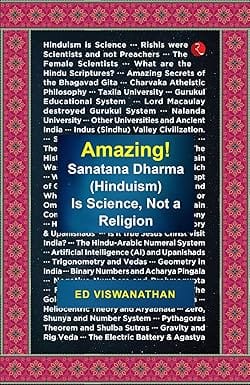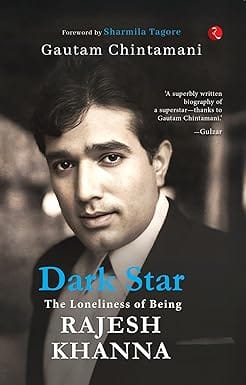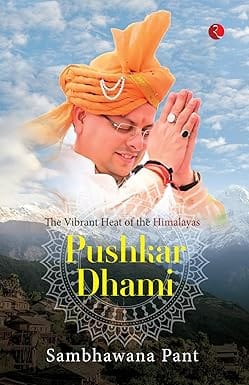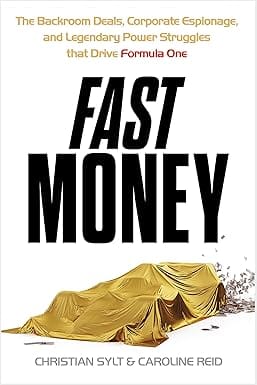WELCOME TO MIDLAND BOOK SHOP!
SHOP FOR
- Non-ficton
- Non-ficton
- Contemporary Fiction
- Contemporary Fiction
- Children
- Children
- Comics & Graphic Novels
- Comics & Graphic Novels
- Non-Fiction
- Non-Fiction
- Fiction
- Fiction
Shop No.20, Aurobindo Palace Market, Hauz Khas, Near Church +91 9818282497 | 011 26867121 110016 New Delhi IN
Midland The Book Shop ™
Shop No.20, Aurobindo Palace Market, Hauz Khas, Near Church +91 9818282497 | 011 26867121 New Delhi, IN
+919871604786 https://www.midlandbookshop.com/s/607fe93d7eafcac1f2c73ea4/677cda367903fd013d69b606/without-tag-line-480x480.png" [email protected]9789361567049 686e58a62324b724b4036049 Amazing! Sanatana Dharma (hinduism) Is Science, Not A Religion https://www.midlandbookshop.com/s/607fe93d7eafcac1f2c73ea4/686e58a82324b724b4036051/81h8tup9z0l-_sy385_.jpg 9789361567049
• The numeral system was invented by India and is known as Hindu-Arabic numeral system.
• The first university in the world was established in Takshashila, also known as Taxila, during 700 BCE.
• Aryabhata (476–556 CE), the astronomer and mathematician, discovered ‘shunya’ or zero.
• Many languages originated from Sanskrit. Some of the first words of the English language came from Sanskrit words, such as ‘father’ from ‘pita’ and ‘mother’ from ‘mata’. According to Forbes magazine, Sanskrit is the most suitable language for computer software.
• The decimal system as well as the place value system were developed in India in 100 BCE.
• Electric Battery: Maharishi Agastya (approximately 1500–1200 BCE) invented electricity generation as well as the use of electricity, electric wire and battery cells (formula for electric battery).
• The value of pi was first calculated by Baudhayana, who lived around 800 BCE, and he explained the concept of what is known as the Pythagorean Theorem. He discovered this long before Pythagoras.
• Surya Siddhanta has calculations of the diameters of Mars, Mercury, Jupiter, Venus, Saturn, Earth, Moon and Sun, as well as their distances from the planets.
• Mathematical subjects like algebra and trigonometry were discovered by Indians. Quadratic equations were invented by Bhaskaracharya (1114–1185 CE).
• Mayasura, in his treatise Surya Siddhanta, calculated the time taken for the Earth to orbit the Sun to nine decimal places (365.258756484).
• Ayurveda, which is a part of the Hindu Upavedas, is also one of the earliest schools of medicine in the world. Charvaka, the father of medicine, consolidated Ayurveda 2,500 years ago.
• Atomic Theory: Maharishi Kanada, the creator of Vaisheshika Upanishad, said in 600 BCE that paramanu (atom) is the indestructible particle of matter and discussed atomic theory long before the West did.
• Rishi Sushruta (800–700 BCE) is considered the ‘Father of Surgery’.
• The ‘vimana’ (aeroplane) that Mayasura built is said to be a three-storied flying craft operated by motive power generated by solar rays. Details of the Pushpaka Vimana are described in the Valmiki Ramayana.
• The art of navigation was born in the river Sindh, 5,000 years ago. The very word ‘navigation’ is derived from the Sanskrit word ‘navgati’. ‘Nav’ means a ship or a vessel and ‘gati’ means speed or progress.
• The first university in the world was established in Takshashila, also known as Taxila, during 700 BCE.
• Aryabhata (476–556 CE), the astronomer and mathematician, discovered ‘shunya’ or zero.
• Many languages originated from Sanskrit. Some of the first words of the English language came from Sanskrit words, such as ‘father’ from ‘pita’ and ‘mother’ from ‘mata’. According to Forbes magazine, Sanskrit is the most suitable language for computer software.
• The decimal system as well as the place value system were developed in India in 100 BCE.
• Electric Battery: Maharishi Agastya (approximately 1500–1200 BCE) invented electricity generation as well as the use of electricity, electric wire and battery cells (formula for electric battery).
• The value of pi was first calculated by Baudhayana, who lived around 800 BCE, and he explained the concept of what is known as the Pythagorean Theorem. He discovered this long before Pythagoras.
• Surya Siddhanta has calculations of the diameters of Mars, Mercury, Jupiter, Venus, Saturn, Earth, Moon and Sun, as well as their distances from the planets.
• Mathematical subjects like algebra and trigonometry were discovered by Indians. Quadratic equations were invented by Bhaskaracharya (1114–1185 CE).
• Mayasura, in his treatise Surya Siddhanta, calculated the time taken for the Earth to orbit the Sun to nine decimal places (365.258756484).
• Ayurveda, which is a part of the Hindu Upavedas, is also one of the earliest schools of medicine in the world. Charvaka, the father of medicine, consolidated Ayurveda 2,500 years ago.
• Atomic Theory: Maharishi Kanada, the creator of Vaisheshika Upanishad, said in 600 BCE that paramanu (atom) is the indestructible particle of matter and discussed atomic theory long before the West did.
• Rishi Sushruta (800–700 BCE) is considered the ‘Father of Surgery’.
• The ‘vimana’ (aeroplane) that Mayasura built is said to be a three-storied flying craft operated by motive power generated by solar rays. Details of the Pushpaka Vimana are described in the Valmiki Ramayana.
• The art of navigation was born in the river Sindh, 5,000 years ago. The very word ‘navigation’ is derived from the Sanskrit word ‘navgati’. ‘Nav’ means a ship or a vessel and ‘gati’ means speed or progress.
About the Author
Ed Viswanathan is the author of Am I a Hindu?, an international bestseller about Hindu culture that takes the form of a very lively discussion between a 14-year-old American-born Indian and his middle-aged father, covering every aspect of Hinduism in 90 chapters. Am I a Hindu? has been translated into Hindi (Rupa Publications) and Indonesian.
His other bestselling titles are: Amazing Secrets of the Bhagavad Gita (2016) and Amazing Secrets of Hinduism:
His other bestselling titles are: Amazing Secrets of the Bhagavad Gita (2016) and Amazing Secrets of Hinduism:
in stockINR 316
1 1
Email ID already exists!
Your Current password is incorrect
Password Updated Successfully
Thanks for your Feedback
- Home
- Non-Fiction
- Amazing! Sanatana Dharma (hinduism) Is Science, Not A Religion
Amazing! Sanatana Dharma (hinduism) Is Science, Not A Religion
ISBN: 9789361567049
₹316
₹395 (20% OFF)SIZE GUIDE
Sold By: Hauz Khas - Aurobindo Market
Details
- ISBN: 9789361567049
- Author: Ed Viswanathan
- Publisher: Rupa
- Pages: 312
- Format: Paperback
Book Description
• The numeral system was invented by India and is known as Hindu-Arabic numeral system.
• The first university in the world was established in Takshashila, also known as Taxila, during 700 BCE.
• Aryabhata (476–556 CE), the astronomer and mathematician, discovered ‘shunya’ or zero.
• Many languages originated from Sanskrit. Some of the first words of the English language came from Sanskrit words, such as ‘father’ from ‘pita’ and ‘mother’ from ‘mata’. According to Forbes magazine, Sanskrit is the most suitable language for computer software.
• The decimal system as well as the place value system were developed in India in 100 BCE.
• Electric Battery: Maharishi Agastya (approximately 1500–1200 BCE) invented electricity generation as well as the use of electricity, electric wire and battery cells (formula for electric battery).
• The value of pi was first calculated by Baudhayana, who lived around 800 BCE, and he explained the concept of what is known as the Pythagorean Theorem. He discovered this long before Pythagoras.
• Surya Siddhanta has calculations of the diameters of Mars, Mercury, Jupiter, Venus, Saturn, Earth, Moon and Sun, as well as their distances from the planets.
• Mathematical subjects like algebra and trigonometry were discovered by Indians. Quadratic equations were invented by Bhaskaracharya (1114–1185 CE).
• Mayasura, in his treatise Surya Siddhanta, calculated the time taken for the Earth to orbit the Sun to nine decimal places (365.258756484).
• Ayurveda, which is a part of the Hindu Upavedas, is also one of the earliest schools of medicine in the world. Charvaka, the father of medicine, consolidated Ayurveda 2,500 years ago.
• Atomic Theory: Maharishi Kanada, the creator of Vaisheshika Upanishad, said in 600 BCE that paramanu (atom) is the indestructible particle of matter and discussed atomic theory long before the West did.
• Rishi Sushruta (800–700 BCE) is considered the ‘Father of Surgery’.
• The ‘vimana’ (aeroplane) that Mayasura built is said to be a three-storied flying craft operated by motive power generated by solar rays. Details of the Pushpaka Vimana are described in the Valmiki Ramayana.
• The art of navigation was born in the river Sindh, 5,000 years ago. The very word ‘navigation’ is derived from the Sanskrit word ‘navgati’. ‘Nav’ means a ship or a vessel and ‘gati’ means speed or progress.
• The first university in the world was established in Takshashila, also known as Taxila, during 700 BCE.
• Aryabhata (476–556 CE), the astronomer and mathematician, discovered ‘shunya’ or zero.
• Many languages originated from Sanskrit. Some of the first words of the English language came from Sanskrit words, such as ‘father’ from ‘pita’ and ‘mother’ from ‘mata’. According to Forbes magazine, Sanskrit is the most suitable language for computer software.
• The decimal system as well as the place value system were developed in India in 100 BCE.
• Electric Battery: Maharishi Agastya (approximately 1500–1200 BCE) invented electricity generation as well as the use of electricity, electric wire and battery cells (formula for electric battery).
• The value of pi was first calculated by Baudhayana, who lived around 800 BCE, and he explained the concept of what is known as the Pythagorean Theorem. He discovered this long before Pythagoras.
• Surya Siddhanta has calculations of the diameters of Mars, Mercury, Jupiter, Venus, Saturn, Earth, Moon and Sun, as well as their distances from the planets.
• Mathematical subjects like algebra and trigonometry were discovered by Indians. Quadratic equations were invented by Bhaskaracharya (1114–1185 CE).
• Mayasura, in his treatise Surya Siddhanta, calculated the time taken for the Earth to orbit the Sun to nine decimal places (365.258756484).
• Ayurveda, which is a part of the Hindu Upavedas, is also one of the earliest schools of medicine in the world. Charvaka, the father of medicine, consolidated Ayurveda 2,500 years ago.
• Atomic Theory: Maharishi Kanada, the creator of Vaisheshika Upanishad, said in 600 BCE that paramanu (atom) is the indestructible particle of matter and discussed atomic theory long before the West did.
• Rishi Sushruta (800–700 BCE) is considered the ‘Father of Surgery’.
• The ‘vimana’ (aeroplane) that Mayasura built is said to be a three-storied flying craft operated by motive power generated by solar rays. Details of the Pushpaka Vimana are described in the Valmiki Ramayana.
• The art of navigation was born in the river Sindh, 5,000 years ago. The very word ‘navigation’ is derived from the Sanskrit word ‘navgati’. ‘Nav’ means a ship or a vessel and ‘gati’ means speed or progress.
About the Author
Ed Viswanathan is the author of Am I a Hindu?, an international bestseller about Hindu culture that takes the form of a very lively discussion between a 14-year-old American-born Indian and his middle-aged father, covering every aspect of Hinduism in 90 chapters. Am I a Hindu? has been translated into Hindi (Rupa Publications) and Indonesian.
His other bestselling titles are: Amazing Secrets of the Bhagavad Gita (2016) and Amazing Secrets of Hinduism:
His other bestselling titles are: Amazing Secrets of the Bhagavad Gita (2016) and Amazing Secrets of Hinduism:
User reviews
NEWSLETTER
Subscribe to get Email Updates!
Thanks for subscribing.
Your response has been recorded.

India's Iconic & Independent Book Store offering a vast selection of books across a variety of genres Since 1978.
"We Believe In The Power of Books" Our mission is to make books accessible to everyone, and to cultivate a culture of reading and learning. We strive to provide a wide range of books, from classic literature, sci-fi and fantasy, to graphic novels, biographies and self-help books, so that everyone can find something to read.
Whether you’re looking for your next great read, a gift for someone special, or just browsing, Midland is here to make your book-buying experience easy and enjoyable.
We are shipping pan India and across the world.
For Bulk Order / Corporate Gifting
 +91 9818282497 |
+91 9818282497 |  [email protected]
[email protected]
Click To Know More
INFORMATION
QUICK LINKS
ADDRESS
Midland Book Shop - Hauz Khas
Shop No.20, Aurobindo Palace Market, Near Church, New Delhi
Shop No.20, Aurobindo Palace Market, Near Church, New Delhi













